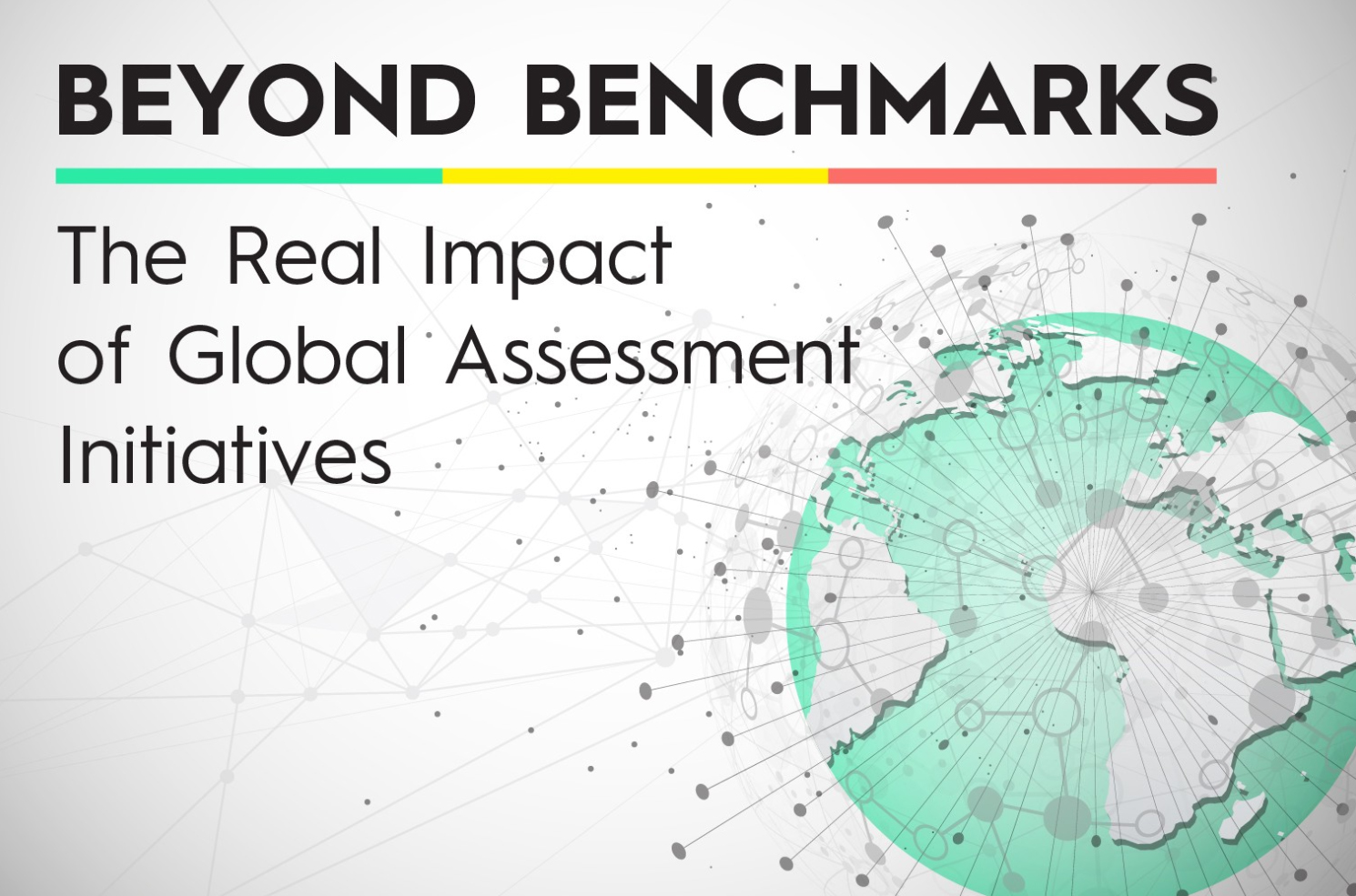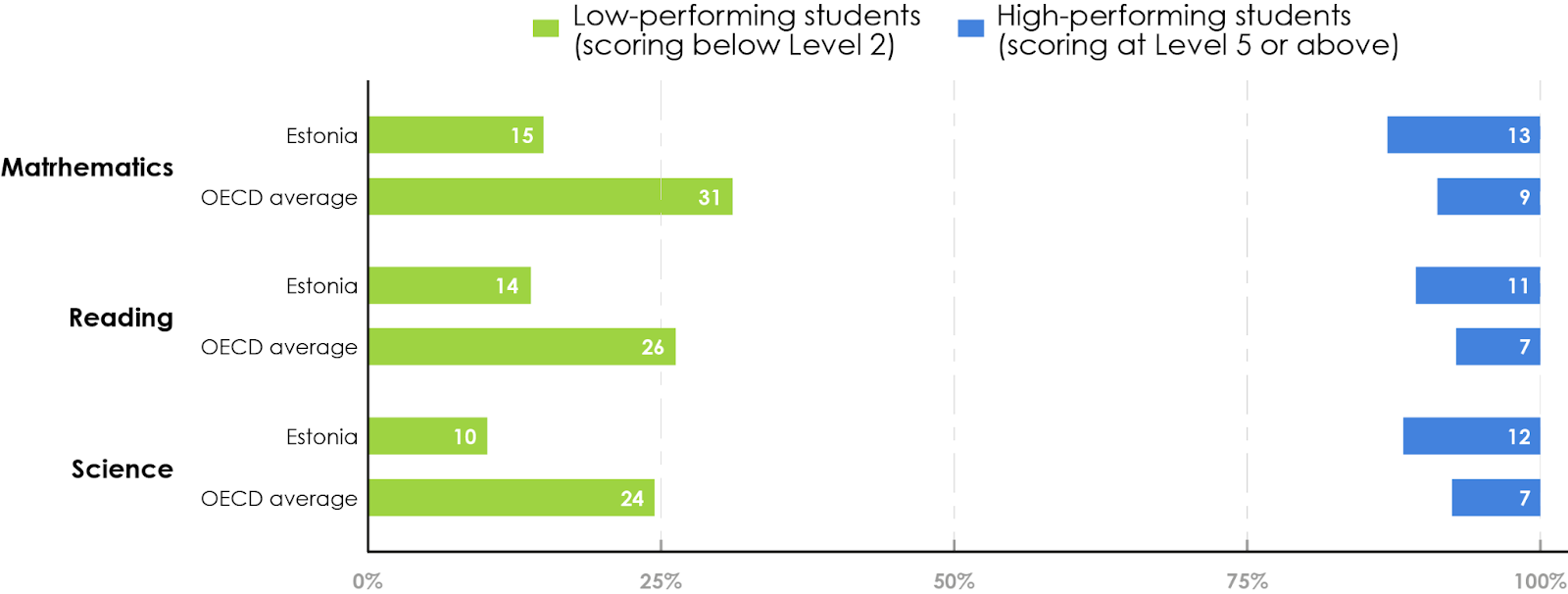

March 31, 2024
Beyond Benchmarks: The Real Impact of Global Assessment Initiatives
Subscribe to Vretta Buzz
In the student assessment domain, global assessment initiatives are primarily aimed to assess quality of education in various perspectives, depending on who is looking at the results of these assessments. For example, international financial institutions use these assessments to predict the future potential of a country's employable human capital, especially regarding loan repayment capabilities. Ministries of Education analyze results to understand national education quality, looking at changes from previous years and comparing their country's performance with benchmarks to design intervention programs.
Meanwhile, local assessment jurisdictions view these international outcomes as indicators of changing educational trends, which may also be reflected in local end-of-year assessments and even serve as evidence for the concurrent validity of their national assessment instruments. Given the important role these assessment initiatives carry, it's essential they're designed with clarity and impartiality to accurately reflect the educational context of each jurisdiction, enabling students to demonstrate their true potential and meet the diverse objectives outlined.
Global Assessment Initiatives: OECD and IEA Programs
Under the umbrella of international organizations, such as the Organisation for Economic Co-operation and Development (OECD), and the International Association for the Evaluation of Educational Achievement (IEA), various global assessment initiatives have been created to monitor educational outcomes across different age groups and disciplines in different countries, and play a critical role of accountability in educational and workforce policies and practices.
The OECD's Programme for International Student Assessment (PISA) evaluates education systems by assessing 15-year-old students' ability to solve real-life problems through reading, mathematics, and science, while the IEA's Trends in International Mathematics and Science Study (TIMSS) and Progress in International Reading Literacy Study (PIRLS) specifically measure achievements in those subjects. The IEA also runs the International Computer and Information Literacy Study (ICILS) to evaluate students' digital literacy, whereas the OECD's Programme for the International Assessment of Adult Competencies (PIAAC) globally assesses adult skills and competencies.
A summarized coverage of these programs are presented in the illustration below:

Countries interested in participating in these assessments need to allocate funding for their administration, gaining access to actionable data and benchmarks provided by these programs to enhance educational outcomes nationally and globally.
Impact of Global Assessment Initiatives on Practice and Policy
Global assessment initiatives are meant to inform educational practice and policy, but due to its widespread reference with ranking context, they are often viewed as external evaluations, which cause hesitation among teachers and principals, leading to a sense of disownership. This perception could be shifted by aligning these programs more closely with internal summative assessments, presenting them not just as quality measures but as tools for informative feedback.
One way to promote genuine engagement among educators with global assessment initiatives, conducting training sessions on the development and authoring of these assessments can foster greater appreciation within the teaching community. This strategy not only provides professional development for local item authors by introducing them to new design practices but also promotes the spread of these skills within the local teaching and assessment community.
Secondly, within the broader context of educational policy reforms, including curriculum and textbook alignment, aligning local monitoring assessments with international student assessment program frameworks demonstrates a commitment to both building a culture that values assessments and internationalizing the education system, thereby enhancing its global competitiveness.
European Success Story: Estonia's Triumph in PISA Data
Analyzing educational success stories reveals effective strategies for nations to improve their educational systems and PISA supports this by promoting high-quality teaching, equitable learning for all, and student well-being. The European Commission's report on PISA success stories in the EU, focusing on seven countries, details how individual, school, and systemic factors improved student outcomes over time, despite the EU not meeting its 2020 target of less than 15% low attainment in key subjects. Historically, and as of 2022, Estonia has consistently exceeded the OECD average in PISA survey results. Evidently, the success factors for Estonia as well as other countries that went beyond the target include increasing school autonomy, addressing inequalities early on, and enhancing teacher training systems.
Estonian Student Ability Indicators. According to the PISA 2022 results, Estonian 15-years old students demonstrate strong reading skills, with 86% reaching Level 2 proficiency (high ability tier), indicating they can understand and analyze moderate texts, and 11% achieving Level 5, showing advanced critical reading and evaluative abilities.

Source: OECD, PISA 2022 Database, Tables I.B1.3.1, I.B1.3.2 and I.B1.3.3.
In Estonia, 90% of students achieved Level 2 or above in science, outperforming the OECD average by demonstrating the ability to understand and apply scientific knowledge in basic scenarios, while 12% excelled at the highest proficiency levels, showing advanced skills in applying scientific concepts creatively to both familiar and new situations.
What Drives Estonia's Success?
If we look into the recent history of education in Estonia, we would see that in 2019, Estonia invested 15.5% of its budget in education, amounting to 6% of its GDP, both figures are higher than the EU averages of 9.9% and 4.7% respectively. In 2021, the Estonian government's expenditure on education as a percentage of GDP slightly increased to 6.2%, continuing the trend observed in previous years (Eurydice report on Estonia, 2023). However, Estonia's educational quality is not solely due to financial input but also to factors like established pre-school education traditions, highly qualified teachers, societal emphasis on education, and an advanced educational infrastructure (European Commission, 2022).
Additionally, national assessments in Estonia are positively received, with broad participation in local monitoring assessments beyond just sampled schools, reflecting the schools' autonomy and proactive approach to student progress assessment. Furthermore, Estonia's advanced digitalization in education led to minimal learning disruptions during the Covid pandemic, facilitating a smooth transition to distance learning.
These factors collectively contributed to a consistent and gradual improvement over the last decade in average performance in mathematics and reading, a reduction in the gender gap in average reading performance, and a decrease in the performance gap based on the language spoken at home. Despite its success, Estonia also faces the challenge of a potential teacher shortage in the future and needs to address equity issues, causing school segregation as students in Estonian-speaking schools consistently outperform those in Russian-speaking schools.
The Criticism of Global Assessment Initiatives
Global assessment initiatives face criticism for overly promoting standardized testing and excessive reference of rankings, which pressures ministries and educators, leading to a shift in focus towards teaching to the test, potentially neglecting the holistic approach to education and negatively impacting the quality and breadth of learning. Additionally, global assessment initiatives may have cultural bias since they are administered globally, potentially limiting their relevance and applicability to various educational systems. Eventually, this approach emphasizes international standards over local educational realities, possibly distorting educational priorities and practices.
Looking Forward: The Future of Global Assessment Initiatives
Enhancing Accessibility and Equity through Digitalization
The impact of global assessment initiatives varies depending on the country’s educational landscape and mainly the local level of engagement with a diverse range of stakeholders for ensuring the accessibility and equity in the conversation, administration, and use of global initiatives.
Digitalization plays a crucial role in this context, enhancing the reach, accessibility, interaction, as well as improved precision of measurement of global assessment initiatives. One particular example explains a very new student engagement after the use of technology in large scale assessments. For example, in France, the introduction of technology-enhanced items (TEI) in a local large-scale assessment increased student engagement, particularly in problem-solving strategies, demonstrating the positive impact of digitalization on the assessment experience.
AI and Global Assessment Initiatives
Looking at the future of the integration of AI in global assessment initiatives with AI's potential to personalized learning, automated scoring, and providing real-time feedback would surely contribute to a more accessible, quality, and inclusive educational assessment landscape. This integration will likely expand in item authoring and assessment administration, leading to a more personalized and accessible experience for both users and administrators. For example, as administrators would have more functionality of item authoring and remote proctoring, users would be enabled to get personalized assessment and feedback.
Expanding this engagement beyond educational professionals to include students, families, community leaders, and cross-sector policy-makers not only deepens the impact and relevance of these assessments but also promotes a more equitable and comprehensive approach to educational policy making, supported by the advantages of digital technology. This inclusive engagement can enhance the quality of learning and ensure that the benefits of global assessment initiatives are widely understood, accepted and utilized, contributing to a fairer education system.
Conclusion
In conclusion, global assessment initiatives like PISA have demonstrated their capacity to provide actionable insights into the educational landscape, influencing policy and practice worldwide. Estonia's success story, highlighted by its strong investment in education and strategic policy reforms, exemplifies how effective engagement with these assessments can lead to significant educational advancements. However, the journey doesn't end here. Looking ahead, global assessment initiatives will increasingly integrate technology, addressing the need for various levels of engagement and bridging the digital-social divide. Additionally, this digital shift will also spotlight data security, as the digitalization of assessments necessitates safeguarding the anonymized data submitted for analysis.
About the Author
Vali Huseyn is an educational assessment specialist, recognized for his expertise in enhancing various aspects of the assessment cycle. His capability to advise on the development of assessment delivery models, administration of different levels of assessments, innovation within data analytics, and creation of swift, secure reporting techniques sets him apart in the field. His work, enhanced by collaborations with leading assessment technology firms and certification bodies, has greatly advanced his community's assessment practices. At The State Examination Centre of Azerbaijan, Vali significantly contributed to the transformations of local assessments and led key regional projects, such as reviews of CEFR-aligned language assessments, PISA-supported assessment literacy trainings, and the institutional audit project, all aimed at enhancing the assessment culture across the country and Post-Soviet region.
Discover pioneering practices in modernizing assessments and gain insights into the future of educational assessments by connecting with Vali on LinkedIn.
Subscribe to Vretta Buzz

